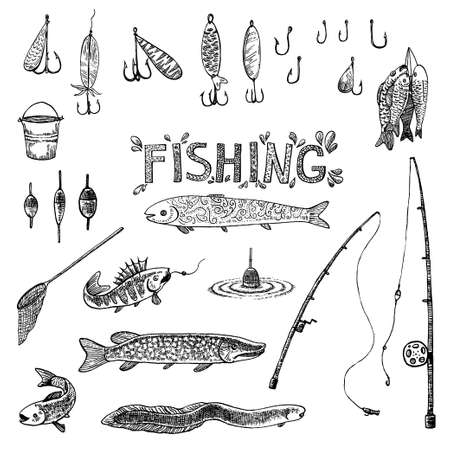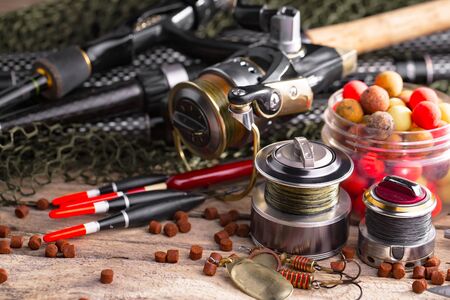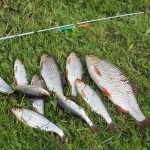1. Understanding Saltwater Environments
If youre serious about saltwater fishing, understanding the environment youre casting into is key. Inshore and offshore fishing offer very different conditions, and knowing these differences can help you choose the right bait to attract the right fish.
Inshore vs Offshore: What’s the Difference?
Inshore fishing typically takes place in waters less than 30 meters deep, close to the shoreline. This includes bays, estuaries, flats, and coastal marshes. Offshore fishing, on the other hand, occurs in deeper waters—usually miles away from land—where anglers target larger, pelagic species.
Key Environmental Factors
Here’s a breakdown of some of the major environmental differences between inshore and offshore fishing:
| Factor | Inshore Fishing | Offshore Fishing |
|---|---|---|
| Water Depth | Shallow (0–30 meters) | Deep (30+ meters) |
| Salinity Levels | Can vary due to freshwater runoff | More stable and higher salinity |
| Water Movement | Affected by tides and wind | Affected by currents and ocean swells |
| Target Species | Redfish, snook, speckled trout, flounder | Tuna, mahi-mahi, marlin, wahoo |
| Bait Preferences | Smaller lures mimicking shrimp or small baitfish | Larger trolling lures or live bait for big game fish |
Why It Matters for Bait Selection
The water conditions directly influence which lures or baits are most effective. For example, inshore species often feed on crustaceans or small baitfish found near grass beds or mangroves. Soft plastics that resemble shrimp or jerkbaits that mimic mullet work well here. In contrast, offshore predators like tuna or marlin are chasing larger prey in open water. That’s where heavy-duty trolling lures or rigged ballyhoo come into play.
Tip for Anglers:
Before heading out, check local water conditions like tide charts and salinity reports. Knowing whether youre going inshore or offshore—and what species are active—can make all the difference in choosing the right lure.
2. Top Inshore Lures and When to Use Them
When youre targeting inshore species like redfish, snook, and speckled trout, choosing the right lure can make or break your day on the water. These fish are highly influenced by tide movement, water clarity, temperature, and bait availability. Below is a breakdown of the most effective inshore lures and when to tie them on.
Best Lures for Common Inshore Species
| Lure Type | Target Species | Best Conditions | Presentation Tips |
|---|---|---|---|
| Soft Plastic Jerkbaits | Redfish, Snook | Clear to slightly stained water; shallow flats | Rig weedless on a twist-lock hook and twitch near grass lines or mangroves |
| Paddle Tail Swimbaits | Speckled Trout, Redfish | Muddy or stained water; low light conditions | Use a steady retrieve along oyster bars or drop-offs |
| Topwater Plugs (e.g., walk-the-dog style) | Snook, Trout | Dawn/dusk; calm water with surface activity | Twitch with pauses to mimic injured baitfish; avoid overworking it |
| Suspending Twitchbaits (e.g., MirrOlure) | Trout, Redfish | Cooler months; clear water over grass beds | Use a jerk-jerk-pause retrieve to trigger reaction strikes |
| Bucktail Jigs | Redfish, Flounder | Deeper channels or colder temps when fish sit low | Bounce slowly off the bottom with occasional pauses |
Timing Your Lure Choice
Tide movement plays a big role in how active inshore fish are. During high tide, predatory species often push up into the mangroves or onto shallow flats to ambush bait. This is when soft plastics and topwaters shine. As the tide drops and fish retreat to deeper troughs or channel edges, jigs and suspending baits become more productive.
Tide Influence at a Glance:
- Incoming Tide: Great for covering flats with paddle tails and topwaters.
- High Tide: Target structure like docks and mangrove edges using jerkbaits.
- Outgoing Tide: Focus on channel mouths with jigs or suspending baits.
- Slack Tide: Slower presentations like twitchbaits or natural-colored soft plastics work best.
How Water Conditions Affect Bait Choice
If the water’s clear, go with more natural colors like silver, white, or olive green. In murky conditions, brighter colors such as chartreuse or darker profiles (like purple or black) help fish locate your lure. Wind also affects presentation—on windy days or choppy water, switch to louder or more aggressive lures like rattling topwaters or vibrating swimbaits.
Lure Color Guide Based on Water Clarity:
| Water Clarity | Lure Color Recommendation |
|---|---|
| Clear Water | Naturals (silver, bone, watermelon red) |
| Slightly Stained Water | White, glow, gold flake patterns |
| Muddy/Dirty Water | Chartreuse, black & purple, fire tiger patterns |
Selecting the right lure depends not just on what you’re targeting but also where and when you’re fishing. With these inshore lure tips in your tackle box, you’ll be better prepared to match the hatch and get more bites every time you hit the salt.

3. Best Proven Offshore Lures for Big Game
When youre heading offshore, targeting hard-fighting predators like tuna, mahi-mahi, and billfish requires the right set of lures designed to handle deep water and fast-moving fish. Offshore fishing is all about covering water and finding active fish in the bluewater. That’s where specialized lures like trolling lures, jigs, and deep-diving plugs come into play.
Trolling Lures: Cover More Water, Catch More Fish
Trolling lures are must-haves for offshore anglers. These lures are designed to be pulled behind a moving boat at varying speeds, mimicking fleeing baitfish. They’re highly effective for attracting pelagic species that roam open waters. Skirted trolling lures with flashy skirts and heads can entice big game like marlin and wahoo from deep below the surface.
Top Trolling Lure Features:
- Bright colors and reflective materials
- Weighted heads for stability at higher speeds
- Can be rigged with ballyhoo or other natural baits
Jigs: Vertical Action for Deep Water Predators
Heavy-duty metal jigs are perfect for dropping down into deeper parts of the water column where big tuna and amberjack often lurk. Vertical jigging allows you to work the lure up and down quickly, imitating a distressed baitfish—something predatory fish cant resist.
Popular Jig Types:
| Jig Type | Best Target Species | Ideal Depth Range |
|---|---|---|
| Butterfly Jigs | Tuna, Amberjack | 100–300 ft |
| Speed Jigs | Dorado, King Mackerel | 50–200 ft |
| Flat-Fall Jigs | Yellowfin Tuna, Grouper | Deep drop-offs & wrecks |
Deep-Diving Plugs: Get Down Where the Fish Are
If youre trolling but want to reach deeper zones without adding weight or downriggers, deep-diving plugs are your go-to lure. These hard-bodied baits have large lips that force them to dive when pulled through the water. Theyre great for enticing strikes from species cruising 20-40 feet below the surface.
Key Benefits of Deep-Diving Plugs:
- Dive depths between 15–40+ feet depending on model
- Lifelike wobble action mimics injured baitfish
- Often come with rattles or holographic finishes for extra attraction
Lure Selection Tips:
- Match the lure size to your target species—bigger fish need bigger profiles.
- Use high-quality terminal tackle; offshore species hit hard and fight harder.
- Adjust trolling speed based on lure type—most work best between 5–9 knots.
The right offshore lure can make all the difference between a slow day on the water and an unforgettable fight with a trophy fish. Whether youre trolling over deep ledges or jigging near underwater structures, having these proven baits in your arsenal will boost your success offshore.
4. Matching the Hatch: Bait Imitation Strategies
One of the most important keys to saltwater fishing success—whether you’re casting from a pier or trolling offshore—is matching the hatch. This means selecting lures that mimic the look and action of the local prey species your target fish are actively feeding on. Saltwater predators like redfish, snook, striped bass, tuna, and mahi-mahi are often keyed in on specific baitfish, crustaceans, or squid, so using the right imitation can make all the difference.
Why Matching the Hatch Matters
Saltwater fish aren’t just chasing anything shiny—they’re looking for food they recognize. When your lure moves and looks like what they’re already hunting, it triggers their natural feeding instincts. If your bait doesn’t match what’s in the water, even aggressive feeders might ignore it.
Common Forage Species and Lure Matches
Here’s a quick guide to common forage species and suggested lure types that best imitate them:
| Forage Species | Lure Type | Best Usage |
|---|---|---|
| Pilchards (Whitebait) | Spoon lures, soft plastic swimbaits | Inshore flats and mangroves for snook and redfish |
| Mullet | Topwater walkers, large soft plastics | Dawn/dusk fishing near shorelines for tarpon and redfish |
| Shrimp | Shrimp-pattern soft plastics or scented jigs | Nights under dock lights or grassy flats for trout and flounder |
| Squid | Squid jigs, glow lures | Northeast coast or offshore reefs for striped bass and tuna |
| Ballyhoo | Trolling skirts, rigged baits with flashy heads | Trolling offshore for mahi-mahi, sailfish, and wahoo |
| Menhaden (Pogies) | Lipless crankbaits, paddle tail swimbaits | Bays and estuaries targeting stripers and bluefish |
Lure Color Selection Tips Based on Water Conditions
The color of your lure also plays a big role in fooling fish. Use this simple guide to help pick the right shade:
| Water Clarity | Lure Color Recommendation | Description |
|---|---|---|
| Clear Water | Naturals (silver, white, translucent) | Mimics real baitfish with subtle presentation; works well in sunlight. |
| Muddy or Stained Water | Loud colors (chartreuse, pink, orange) | Easier for fish to spot in low visibility conditions. |
| Dawn/Dusk or Overcast Days | Darker shades (black, purple) | Create strong silhouettes that stand out against dim lighting. |
Tuning Your Presentation to Match Movement Patterns
The way you retrieve your lure should also reflect how the real bait moves. For example:
- Baitfish: Use steady retrieves with occasional twitches to mimic darting schools.
- Shrimp: Bounce your lure along the bottom with short hops to imitate fleeing shrimp.
- Squid: Employ a vertical jigging motion to simulate swimming tentacle movement.
- Mullet: Slow topwater walk-the-dog action mimics surface-skimming mullet schools.
A Final Tip on Observation
If you’re unsure what bait is present in the area, take a moment to observe the water. Look for birds diving, bait balls flickering at the surface, or even what’s in the stomachs of your catches. The more you know about whats naturally available, the better you can imitate it—and land more fish.
5. Pro Tips for Maximizing Bait Performance
Getting the most out of your saltwater lures isnt just about picking the right one—its about knowing how to rig it, retrieve it, and tweak it for maximum performance. These insider tips come straight from experienced anglers fishing all across U.S. saltwater hotspots—from the Gulf Coast to the Pacific Northwest.
Rig It Right: Setup Matters
The way you rig your bait can make or break your chances of landing a strike. Whether youre casting soft plastics for redfish in Florida or trolling plugs for tuna off California, here are some go-to rigging tips:
| Lure Type | Recommended Rig | Why It Works |
|---|---|---|
| Soft Plastics (Shrimp, Paddle Tails) | Weighted swimbait hook or jig head | Gives lifelike movement and keeps bait at desired depth |
| Topwater Lures | Loop knot connection | Allows natural side-to-side “walk the dog” action |
| Spoons & Metal Jigs | Barrel swivel with leader | Reduces line twist and adds flash during retrieval |
| Diving Plugs | Wire leader with snap swivel | Prevents bite-offs from toothy predators like mackerel or bluefish |
Tune Your Retrieval Technique
Your retrieve should match the behavior of local prey species. Pay attention to water temperature, clarity, and fish activity level. Heres how different retrieves can trigger more strikes:
- Slow Roll: Ideal for colder waters or sluggish fish. Use with paddle tails or swimbaits.
- Twitch and Pause: Deadly with jerkbaits and shrimp lures. Mimics wounded baitfish.
- Burn and Kill: Retrieve fast then stop suddenly—great for provoking reaction bites from aggressive species like mahi-mahi or jacks.
- Popping: Best with poppers near structure. Imitates surface-feeding baitfish being chased.
Modifications That Make a Difference
A few simple lure mods can boost durability and increase hookups. Try these popular tweaks used by pro anglers:
- Add Scent: Apply fish attractant gel to soft plastics or hard baits to mask human scent and draw in fish.
- Upgrade Hooks: Swap stock treble hooks with stronger inline singles or premium trebles to reduce lost fish.
- Tie Flash Strips: Add a bit of flash material or feather to hook shanks for extra visibility in murky water.
- Tune Lips on Diving Plugs: Slight adjustments to the plugs lip angle can change its dive depth and wobble pattern.
Bait Maintenance Tips
Caring for your lures extends their lifespan and keeps them performing at their best:
- Rinse all lures with fresh water after each saltwater trip.
- Dry thoroughly before storing to prevent corrosion.
- Sharpen dull hooks regularly or replace them if rusted.
- Keep soft plastics separated by color to avoid melting or bleeding dyes.
The Bottom Line on Bait Performance
You don’t need a tackle box full of gear—you just need to know how to make each lure count. By learning proper rigging, mastering various retrieves, and making smart modifications, youll be better equipped to turn those near-misses into solid hookups wherever you fish along America’s saltwater coasts.


